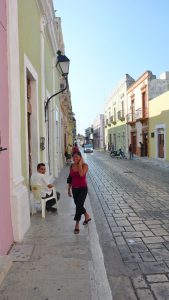
By Bob Schulman
There are a handful of places around the world that you’ve just got to like… spots brimming over with a certain kind of charm or beauty that tells you this is REALLY someplace special. Barcelona, Spain, is one.
So is Lake Louise up in Canada. Ditto for Prague in central Europe’s Czech Republic. There are several such cities down in Mexico, one being Campeche on the Gulf of Mexico with its spectacular tourism infrastructure – but without mobs of tourists.
Campeche at one time was among Mexico’s richest cities, thanks to a scrawny tree that grew all over the nearby forests. Spanish troops came across the tree when they captured what was then the Mayan port of Kin Pech in 1540.
The local folks made a gorgeous, red-orange dye from the tree.
That blew the conquistadores’ minds, because back in Europe — while rich people could foot the hefty bills for purple capes, red waistcoats and other bright clothes dyed with the juices of rare bugs, exotic plants and the like – commoners could only afford clothes dyed with cheap, drab materials. Like soot.
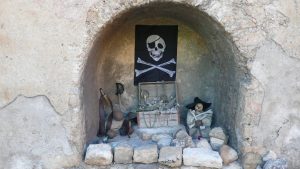
Soon, galleon loads of the Kin Pech trees began showing up in Spain, and news that a cheap source of colorful dye had been found blasted across the continent like a cannonball. The sooty set could now dress like the silky set.
All this from a little tree simply called logwood.
Back in Campeche, as the Spanish renamed the city, fortunes were made by everyone from the logwood forests’ new owners to the slave brokers who imported laborers to harvest the trees. And the town showed it. Campeche’s streets, it’s said, “were lined with fabulous mansions and churches full of gold and silver and the finest Chinese porcelain.”
The only problem was, all this was a red flag to the pirate fleets prowling the Gulf waters from their hangout a few hundred miles down the coast at Ciudad del Carmen. Over the next century, they raided Campeche so often that it became one of the most frequently sacked spots in the New World.
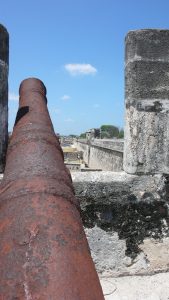
The solution – although late in coming – was to build a huge, eight-sided wall around the city with a fortress on each corner bristling with cannons. When it was finished in 1704, the wall ran over a mile and a half long. It was six and a half feet thick and almost as high as a three-story building.
The pirates never came back.
Campeche thrived as the second richest city (after Veracruz) in eastern Mexico for another century and a half until the mid-1800s, when European inventors figured out a way to make artificial dyes.
Colonial elegance
So what’s the town like today? As you might expect, it’s grown a lot – close to a quarter-million people live here – but the downtown area is much like it was hundreds of years ago.
More than a thousand mansions, churches, government offices and other buildings have been restored to their colonial elegance along the city’s cobbled lanes.
What’s more, a large section of the city — ranked as a UNESCO World Heritage Site — is still framed by the old wall and its gun-studded bastions.
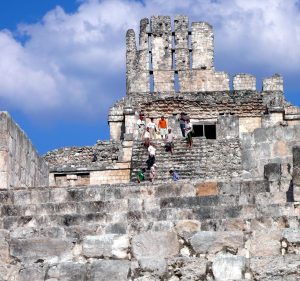
Besides its historical attractions, Campeche offers some of the best bargains in the country.
For example, rooms in the city’s tourist-class hotels can often be found for less than $80 a night, some including breakfast.
And you’ll find stunningly low prices in the handicraft shops around town, especially for woven goods and ceramics.
Beyond that, Campeche is packed with great restaurants (featuring fresh seafood, also at low prices), it’s safe to walk around in (even late at night) and it’s close (roughly a half-hour drive) to the eye-popping Mayan ruins at Edzna out in the jungle.
Built around a main plaza, Edzna’s main temple soars 130 feet above the city, looking down on a ball court – where losing teams are said to have lost more than the game – along with the “Platform of the Knives” and other colorfully named temples and plazas.
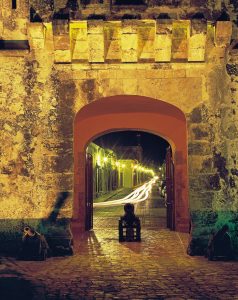
Getting and staying there
Jet hops from Mexico City to the Campeche airport take a little over an hour and a half. From there, it’s a short drive to the city.
Campeche is about a two-hour drive from Merida, the Yucatan Peninsula’s largest city.
Visitors have a choice of about a dozen tourist-class hotels ranging from cozy inns to luxurious five-star properties.
Also in Campeche’s lodging inventory are various old-time haciendas where modest colonial exteriors give way to posh interiors.
